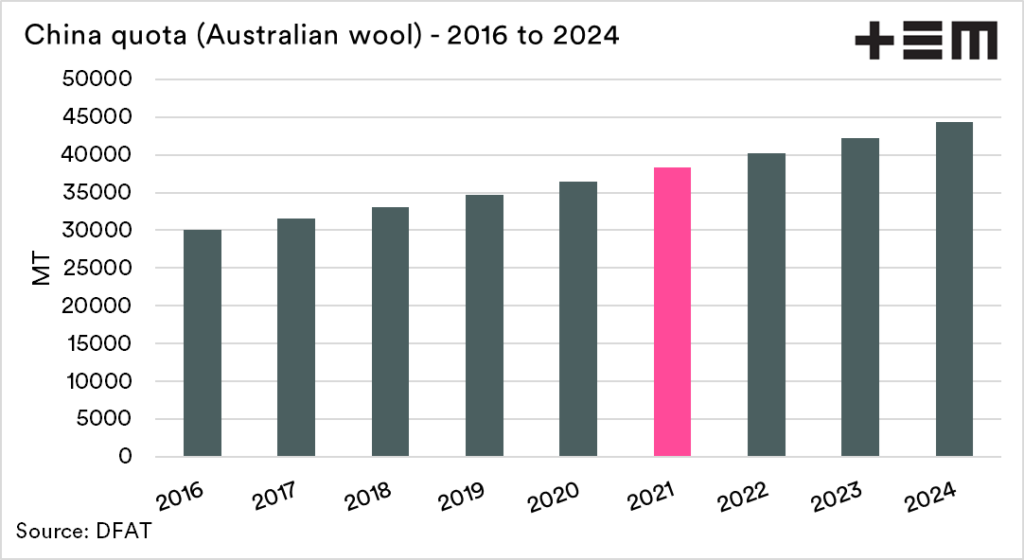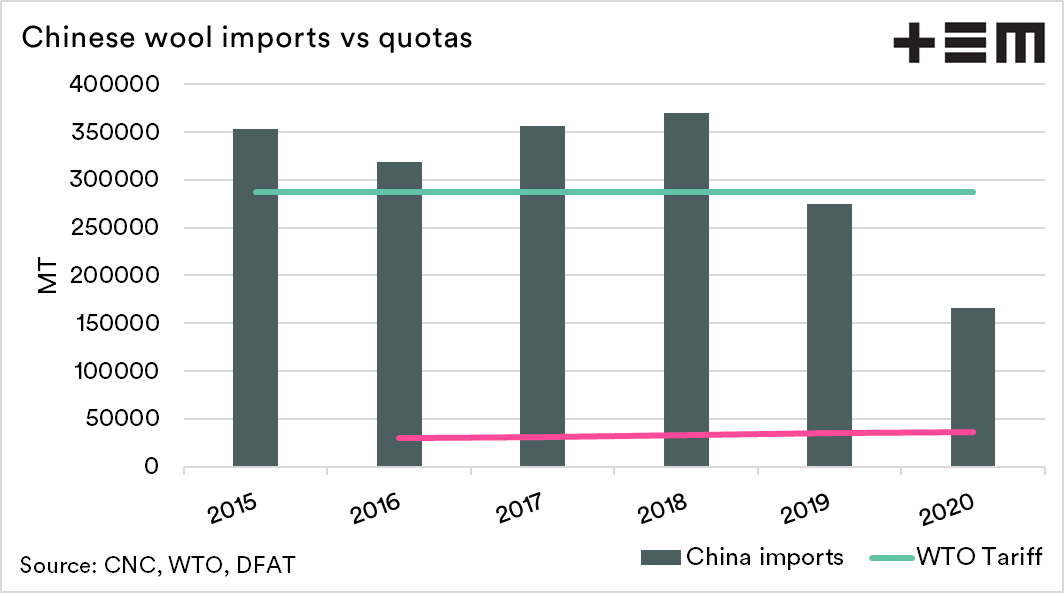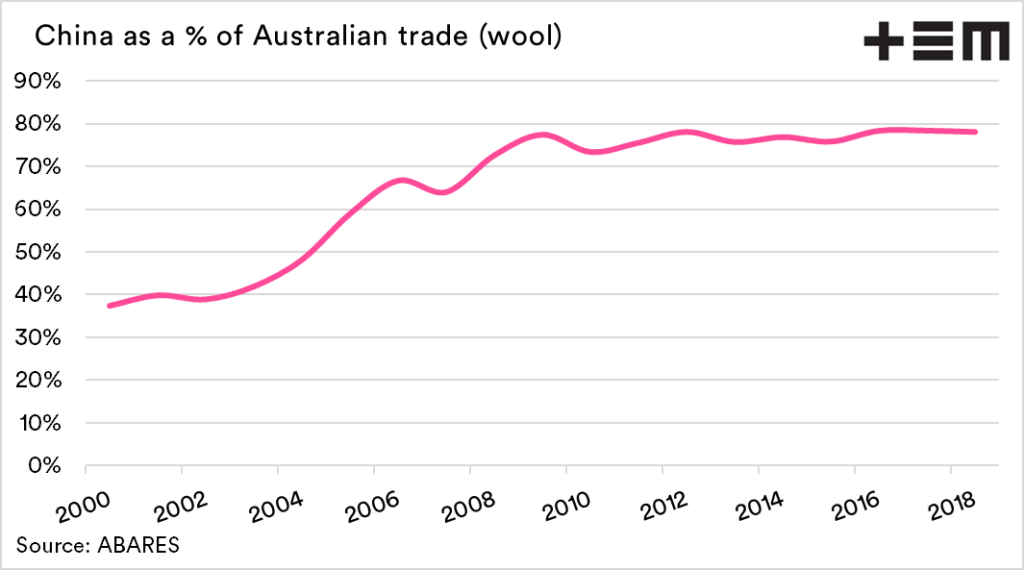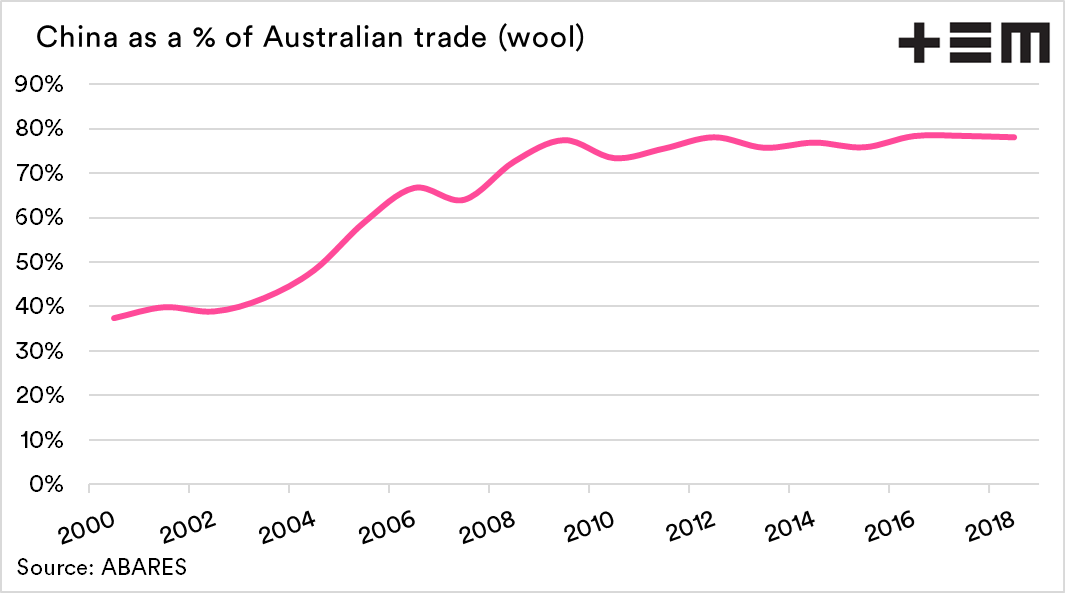China sticks to its wool plans
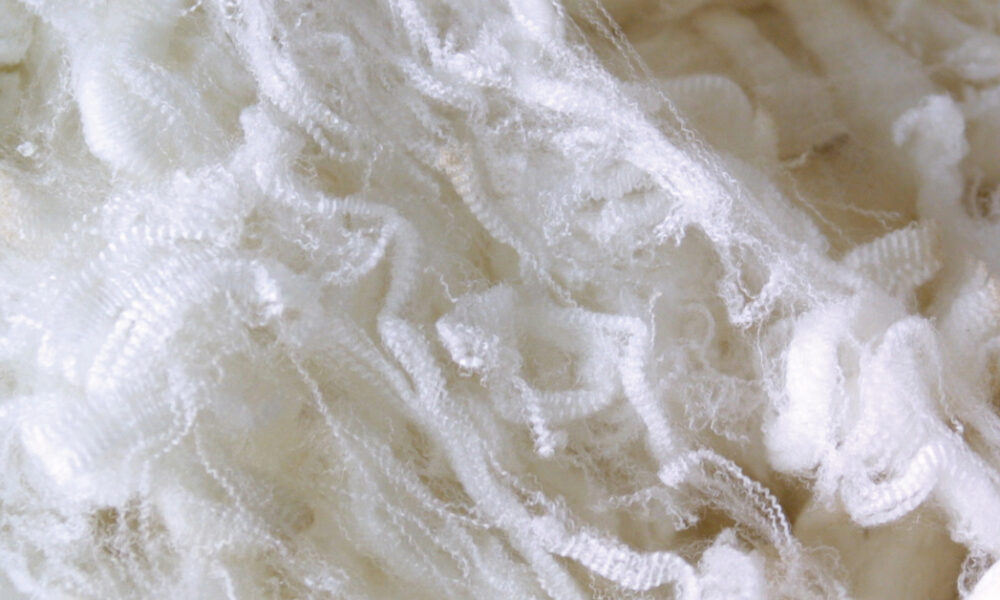
The Snapshot
- China has stuck by its agreement by increasing the Australian duty-free quota to 38288mt.
- The Australian CHAFTA quota is additional to WTO quota of 287kmt.
- The tariff for wool outside of the WTO quota is 38%.
- In recent years China has not exceeded the WTO quota.
- The increase in duty-free quota equates to less than 1% of our overall wool trade with China.
- The increase in duty-free quota will have little impact on the wool market.
- All wool exported from Australia to China will likely be within the WTO/CHAFTA quota in the coming years.
- Our exports are unlikely to be hit by higher than a 1% duty.
The Details
Our relationship with China has been fraught during the past year or so. However, it is good to see that China has kept by its agreed-upon increase in quota with Australia. The wool quota last year was 36465mt but was increased by 5% to 38288mt for 2021.
Australia has a duty free quota which has been agreed between the two nations under the CHAFTA agreement. This quota has been increasing by 5% each year until 2024 when it will reach 44324mt.
So whilst it is good to see China sticking to their agreements, it is hardly surprising. What does it all mean?
Does this impact the industry?
It is always good to get a duty free quota, reducing the cost of export to China. It is important to note that China barely has any tariffs on wool. China has a WTO tariff of 287kmt, which is available to all countries.
The WTO quota attracts a whopping 1% duty. Any imports outwith the quota are subject to a 38% tariff. There are suggestions that China regularly does not impose the 38% tariff when quotas are breached.
The CHAFTA agreed on free duty for Australia is additional to the 287kmt WTO tariff. In theory, Australia could access 325kmt at a 1% duty or below.
The reality is that the majority (>70%) of wool imported into China comes from Australia. In the past two years, China has not imported enough wool to breach it’s WTO quota.
The reality is that most, if not all, of our wool headed to China in coming years, will be at a duty rate of 0-1%.
Overall the duty-free component is beneficial for the Australian wool trade. However, the increase in duty-free exports to China of 1823 equates to less than 1% of our exports to China.
The increase is unlikely to impact the wool trade significantly, especially considering Australian wool consumes most of the WTO tariff.
Whilst it is good to see China sticking to their agreement, this should not be misconstrued as a thawing of our relationship. They are sticking to their understanding, and that is all.
Australia and China are incredibly interlinked when it comes to the wool trade. They are our biggest customer, and we are their biggest supplier.
Whilst there are replacement commodities (see here), there are minimal sources of wool globally. So it reduces the chances of wool being targeted by a diplomatic spat.

